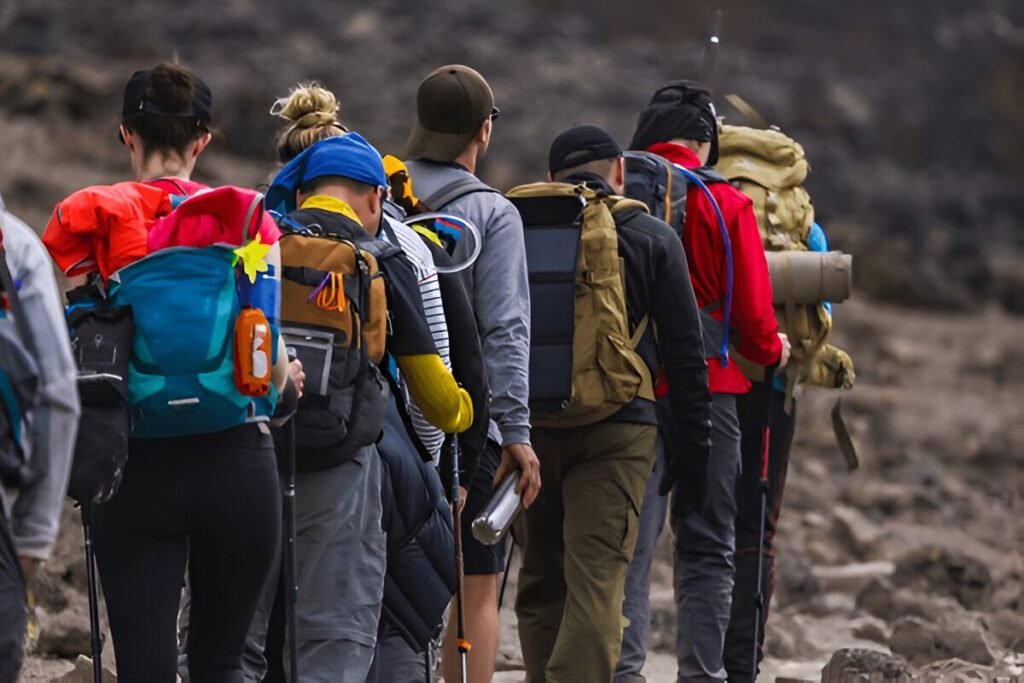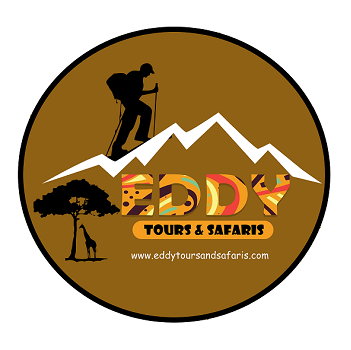7-days Kilimanjaro Umbwe Route, There are six established routes to climb Mount Kilimanjaro – Marangu, Machame, Lemosho, Shira, Rongai and Umbwe. The Marangu, Machame, and Umbwe routes all approach from the south of the mountain. The Lemosho and Shira routes approach from the west. The Rongai route approaches from the north. All routes except Marangu and Rongai descend via Mweka route.

This route is the steepest with the shortest and most direct routes to the Southern Glaciers, Western Breach and Uhuru Peak. It is probably the most scenic, non-technical route on Kilimanjaro. However it is quite taxing, primarily due to the relatively fast ascent to higher altitude, but the rewards are plentiful. Very steep route best suited to experienced trekkers.
Duration: 6 – 7 days.
Difficulty: Very High
Scenery: Very good
Traffic: Very low
The 7-day Umbwe Route is a more gradual version of the traditionally steep and direct 6-day trek. This extended itinerary provides an extra acclimatization day, increasing the summit success rate while maintaining the challenge and remoteness of this scenic route.
Detailed 7-days Kilimanjaro Umbwe Route Itinerary
Day 1: Umbwe Gate (1,800m) Umbwe Camp (2,850m)
Distance: 11km (6.8 miles)
Hiking Time: 5-7 hours
Elevation Gain: 1,050m
Vegetation Zone: Rainforest
What to Expect:
Register at Umbwe Gate before starting the ascent through dense rainforest.
The steep and narrow trail leads up a ridge, with lush vegetation and possible monkey sightings.
Arrive at Umbwe Camp, located in the forest zone.
Day 2: Umbwe Camp (2,850m) Barranco Camp (3,950m), 7-days Kilimanjaro Umbwe Route
Distance: 6km (3.7 miles)
Hiking Time: 4-6 hours
Elevation Gain: 1,100m
Vegetation Zone: Moorland
What to Expect:
The forest thins as the trail steepens along the ridge, offering dramatic views of Kibo Peak.
The trek transitions into moorland, characterized by giant lobelias and Senecios.
Arrive at Barranco Camp, offering incredible views of the Barranco Wall.
Day 3: Acclimatization at Barranco Camp (3,950m), 7-days Kilimanjaro Umbwe Route
Activity: Short hikes for acclimatization
Elevation Gain: Minimal
Vegetation Zone: Moorland
What to Expect:
Spend the day at Barranco Camp to allow better acclimatization.
Take short hikes to higher elevations and return to camp.
Enjoy stunning landscapes, helping your body adjust to the altitude.
Day 4: Barranco Camp (3,950m) Karanga Camp (4,035m), 7-days Kilimanjaro Umbwe Route
Distance: 5km (3.1 miles)
Hiking Time: 4-5 hours
Elevation Gain: 85m
Vegetation Zone: Alpine Desert
What to Expect:
Begin the day by climbing the Barranco Wall—a challenging but non-technical rock scramble.
Follow rolling terrain to reach Karanga Camp, an important acclimatization stop.
Day 5: Karanga Camp (4,035m) Barafu Camp (4,673m), 7-days Kilimanjaro Umbwe Route
Distance: 4km (2.5 miles)
Hiking Time: 4-5 hours
Elevation Gain: 638m
Vegetation Zone: Alpine Desert
What to Expect:
Trek through barren, rocky terrain to reach Barafu Camp, the final base before the summit.
Rest early and prepare for the midnight summit push.

Day 6: Barafu Camp (4,673m) Uhuru Peak (5,895m) Mweka Camp (3,100m), 7-days Kilimanjaro Umbwe Route
Distance: 16km (9.9 miles)
Hiking Time: 12-15 hours
Elevation Gain: 1,222m (to summit), then descent of 2,795m
Vegetation Zone: Arctic to Moorland
What to Expect:
Start the summit attempt at midnight.
Reach Stella Point (5,756m) at sunrise, then continue to Uhuru Peak (5,895m).
After celebrating at the summit, descend to Mweka Camp.
Day 7: Mweka Camp (3,100m) Mweka Gate (1,640m), 7-days Kilimanjaro Umbwe Route
Distance: 10km (6.2 miles)
Hiking Time: 3-4 hours
Elevation Loss: 1,460m
Vegetation Zone: Rainforest
What to Expect:
A final descent through lush rainforest, with a chance to see Colobus monkeys.
Arrive at Mweka Gate, where you receive your summit certificate.
Transfer back to Moshi or Arusha for celebration.
Why Choose the 7-days Kilimanjaro Umbwe Route ?
Extra Acclimatization: Reduces the risk of altitude sickness.
Better Summit Success Rate: More time to adjust to high altitude.
Scenic & Less Crowded: Offers stunning views and fewer climbers.
Steep & Demanding: Not recommended for beginners.
Higher Cost: One extra day adds to the budget.
Best Time to Climb Kilimanjaro via Umbwe Route
Best Seasons:
January – March: Fewer crowds, cooler temperatures.
June – October: Best weather conditions, high visibility.
Avoid: April-May (heavy rains), November (short rains).
Packing List & Gear Recommendations
Essential Clothing:
Waterproof Jacket & Pants (Gore-Tex recommended)
Insulated Down Jacket for Summit Night
Moisture-Wicking Base Layers
Thermal Gloves, Hat, & Balaclava
Footwear:
Sturdy, Broken-in Hiking Boots
Warm, Wool Socks
Gear:
4-Season Sleeping Bag (-10°C to -20°C rating)
Trekking Poles (for steep descents)
Headlamp & Extra Batteries
Other Essentials:
High-SPF Sunscreen & Sunglasses
Hydration System (Camelbak or Bottles)
Snacks (energy bars, nuts, dried fruit)
Includes: 7-days Kilimanjaro Umbwe Route
- Kilimanjaro trekking according to the itinerary
- Professional, English-speaking Wilderness First Responder & CPR certified Guide
- Proper Ration of Mountain crew (Cook & Porters)
- Pre and Post accommodations (2 nights Bed and Breakfast)
- Airport Transfers
- Meals according to the itinerary
- Drinking water and Full Board Meals
- All National Park & Hut Fees, Crew Permits and VAT
- Fair and Sustainable Salary Crew Wages
- Gate Transfers
- Complimentary Oxygen Cylinder
- Quality Imported Equipments
Excludes: 7-days Kilimanjaro Umbwe Route
Additional lodge nights if early descent from the mountain $150 per room
Flights
Visa fees
Travel or Medical Insurance is required and you should ask for Recommendation
Gamow Bag
Medication
Tips for porters and mountain crew (20% Industry Standard Recommended)
Personal spending money for souvenirs etc.
Energy food & beverages, alcoholic and soft drinks
Personal hire gear such as trekking poles, sleeping bags, etc.

